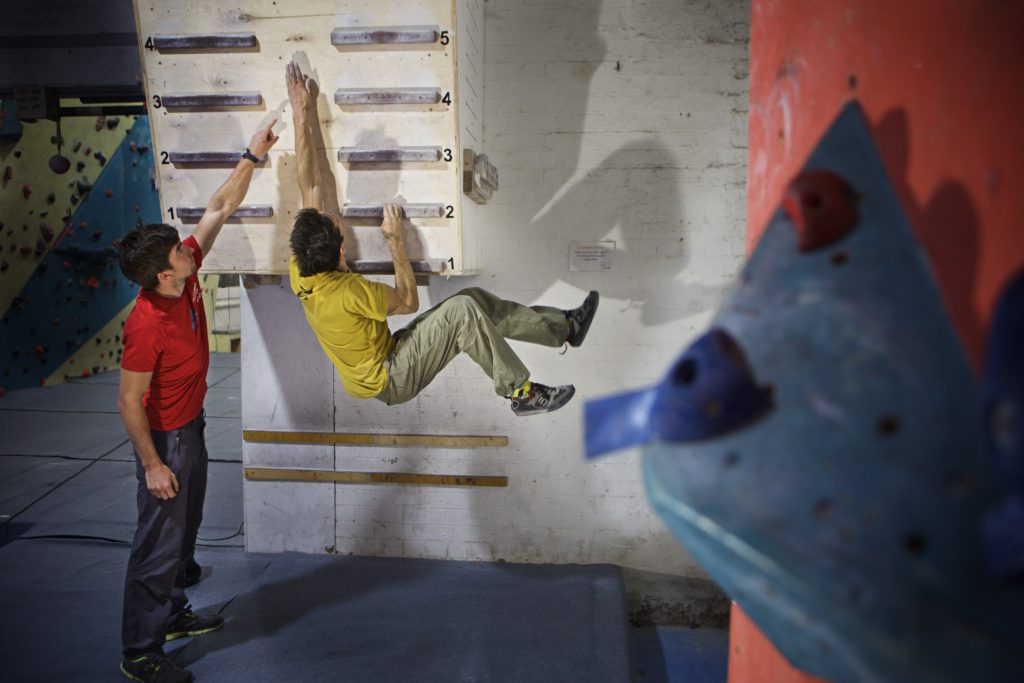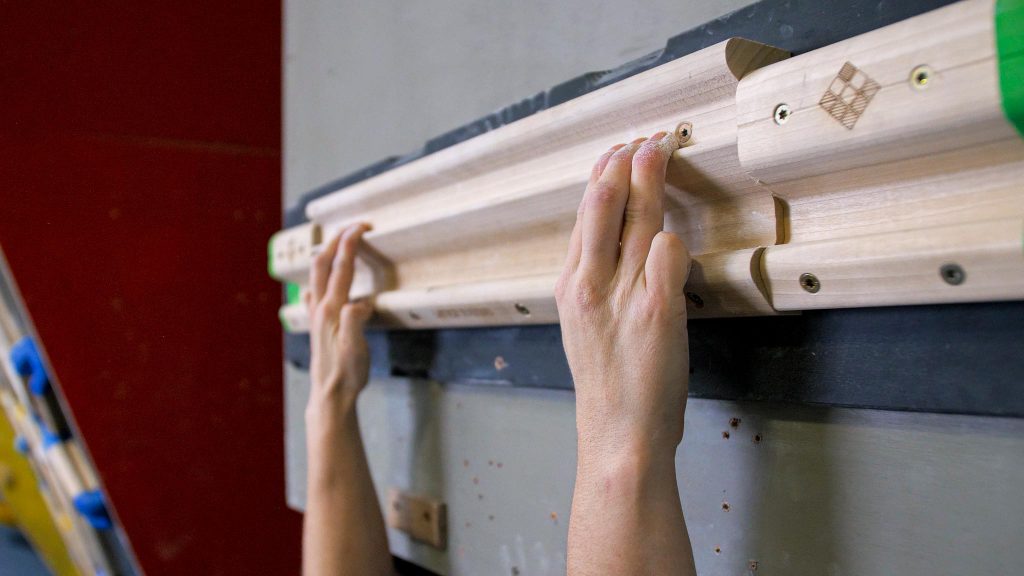Lattice Training Insights – Underperformers, Part 2
Every 2 weeks here at Lattice, the coaches get together and take it in turns to lead a discussion on a topic of their choice. We use these sessions to further educate ourselves and share ideas on the wide range of topics that play into climbing and training for climbing. Here we are looking to share some of the main takeaways so that you can apply them to your own climbing and training!
Last week in part 1 of Underperformers we discussed the different types of underperformers and touched on what you can do if you find that you are one of these people.
In this second part of Underperformers we will delve into some more detail about how you can address some of the issues brought up in the previous blog.
If you haven’t read part one or you need a little reminder of what we spoke about you can find it here: Underperformers Part 1
Trainers
Fear of negative evaluation.
Completing a training cycle where you have increased your training metrics can be highly satisfying. But it can also add a lot of pressure to perform on the rock or in a competition. This can lead to performance anxiety and not translating training to climbing as well as you might expect. Remember, training metrics are just one piece of the puzzle when it comes to climbing. We should apply the same focus to our movement, tactics and mindset. One thing you can do instead of tracking your training metrics is to try and focus on the quality of your movement in your sessions. You could aim to rate your movement or your mental focus in a session with the aim of increasing this rating over time.
Threat appraisal
The way in which we perceive a situation is regulated by balancing the resources for and demands of a situation. Our bodies and brains are in constant communication in order to budget appropriately! Your resources would be things like your skills, energy availability (i.e. nutrition) and external support. The demands would be things like danger, stress or required effort. Someone who is focused more on the demands will look at things through a threat appraisal perspective. Whereas looking at things from a resources point of view means that you are looking at things from a challenge perspective, or challenge appraisal perspective.
If you feel you are underperforming on a project, then you may be looking at things from a threat appraisal perspective and not getting the best performance out of yourself. For example, you may think to yourself ‘this move is impossible, there’s no way I can do that!’. Instead think ‘I can hold the holds, so I will be able to move into the position, I just haven’t worked it out yet’. Changing the narrative around your project to be more curious can help nurture a challenge appraisal perspective.
Extreme motivation
It might seem counterintuitive, but overly high levels of motivation have been shown to actually reduce levels of performance. Obviously low levels of motivation also don’t help to improve performance. But the optimal level of motivation is moderate to see the best chances of success. If you are extremely motivated and really want it, this can lead to feelings of pressure and anxiety which affect your performance negatively, or simply over-gripping through over-psyche and falling off pumped and confused! This has also been phrased as “holding a goal gently”, such that you are motivated for it, but you aren’t negatively affected if you don’t get it. This can be helped by putting value on other things in climbing and your life. This way you see that your goal is a small part of your fulfilment.
Movement
Athletes who are overly strong tend to favour exercises that are strength based. They sacrifice a lot of time on developing their movement skills. Often it can be hard to self evaluate movement, but it becomes a lot easier if you review footage of yourself. Another option is to get a friend to review the same footage, they may spot things that you have overlooked. If you find movement inefficiencies, begin to address them in your training.
Outdoor movement is often a lot more nuanced than indoor climbing. Moving some of your training sessions to the outdoors will help to develop the familiarity needed to ensure that you are moving efficiently on rock. Alternatively, if more time on rock isn’t an option then reclimbing indoor problems with the aim of mastery. Or try reclimbing them with different sequences. Additionally, stepping away from the Moonboard every so often to climb on different styles and hold types indoors will help.
Build experience
Having a well rounded pyramid of climbs helps to develop a wide range of schemas. You can draw from these when you are more challenged on a project grade route or boulder.
A tactic which has proven effective is to cycle style of climbing with the period in your training cycle. I.e. Base training is a great time to expand your pyramid of routes and your peak phase is a great time to focus on your hardest routes. Sub-maximal doesn’t necessarily mean easy, and will often require some redpointing. The time spent on sub maximal routes is a great time to learn about the redpointing process and to learn tactics that will help you to make the most of your performance phase.
Small gains to be made
Climbers who have a long training history and are already extremely well developed may simply have less gains to make. Adaptations may slow and be smaller. The key to improving here is to focus on periodisation to keep challenging the body with different stimuli. For example, periodically choosing specific grips to work on. Another useful approach in this instance is to look to areas of weakness or those that haven’t been trained extensively. even if these may seem niche, as it will offer a good opportunity to see a faster progression and may have a greater impact on climbing performance than eeking out a small % increase in an already well trained area.

Busy Types
High allostatic load
The high allostatic load that comes with always being busy means that this type of person tends to have a high build up of fatigue coming in from other areas of their life. This will affect their energy levels for climbing and training. Unfortunately it can be very difficult to remove some of the others stressors from your life, but if possible, trim away the things that aren’t essential and that are causing undue stress. Is that meeting really necessary? Do you need to work that extra weekend to impress the boss? All of these things add up!
Sleep
The busy types tend to not have the best sleeping patterns. Sleep deprivation is essentially another allostatic load. Without adequate sleep we can’t recover properly from previous sessions and we won’t have the required energy levels for our next session. Sleep deprivation also reduces cognitive function, glycogen stores and produces oxidative stress. A simple way to improve here would be to give yourself a bedtime that you can stick to.
Thinkers
Allostatic load
All forms of stress contribute to our allostatic load. Overthinking and worrying about the minutiae of your training plan is no different. While I realise the impossibility of asking someone to not think about a pink elephant, it is worth considering whether overthinking the training and the performance of each session is providing valuable information that is worth the stress that comes with it. A simple way around this would be to monitor your training less frequently. Having more data just gives you more to think about. So if you are a thinker and write down notes on every session, then it might be worth thinking about doing a retrospective weekly review of your training load.
Negative mindset
Overthinking can contribute to a negative mindset. If, through overthinking, you begin down a negative mindset path, this will spill over into your climbing and training sessions.
Positive imagery has been shown to improve performance in sport by improving the neuro muscular connection (Woolfock et al 1985). I realise the irony of trying to reduce overthinking by thinking! However, if this tendency to overthink can be channeled into positive imagery then this trait can be turned into something that won’t be detrimental to your performance.

Poor energy balance
Reduce allostatic load
We have previously covered the fact that life and everything outside of climbing has a “load” to it as well (termed allostatic load). As such, our allostatic load can impact our recovery, thus our ability to adapt to training. If poor energy balance is a factor in poor training response, one of the ways to alleviate this is to reduce the stress coming from other areas of your life. This allows your body more energy to be spent on recovery from climbing training.
Increase nutritional intake
The other way to view this (and most likely the better way to approach poor energy balance) is to increase the amount and quality of your nutrition. There is certainly a hierarchy of importance when it comes to nutrition. Unfortunately one thing that we commonly see in climbers is to prioritise quality over quantity. That is, they focus on eating a well balanced diet over making sure that their energy intake is sufficient to cover their energy requirements. Unfortunately it doesn’t matter if you only eat ‘good’ foods if you’re not meeting your energy needs. This can be a sensitive topic for some climbers, but experimenting with eating more may be a great way to see if this is impacting your training, recovery and rate of adaptation. Climbing is a high intensity sport and so carbohydrates are key, as this fuels anaerobic exercise. The timing of nutritional intake can also have an impact on performance and recovery. So bunching carbohydrates around training may help improve performance in training and recovery.
So who is most likely to excel?
“The perfect athlete” would be an athlete who sees their long term project as an enjoyable journey, but isn’t overly motivated to perform when the time comes. They get plenty of training in, but tend to perform best on the rock. They aren’t scared of giving it a go. They will balance their climbing with their allostatic load. They’ll have good nutrition and sleep. And when it comes to thinking about the project it will be in the form of positive imagery.
Many of us will fall down in one or more of these areas, so if you can highlight that area and implement some changes, then you may be able to increase your chances of success, regardless of whether you are an underperformer or not.





